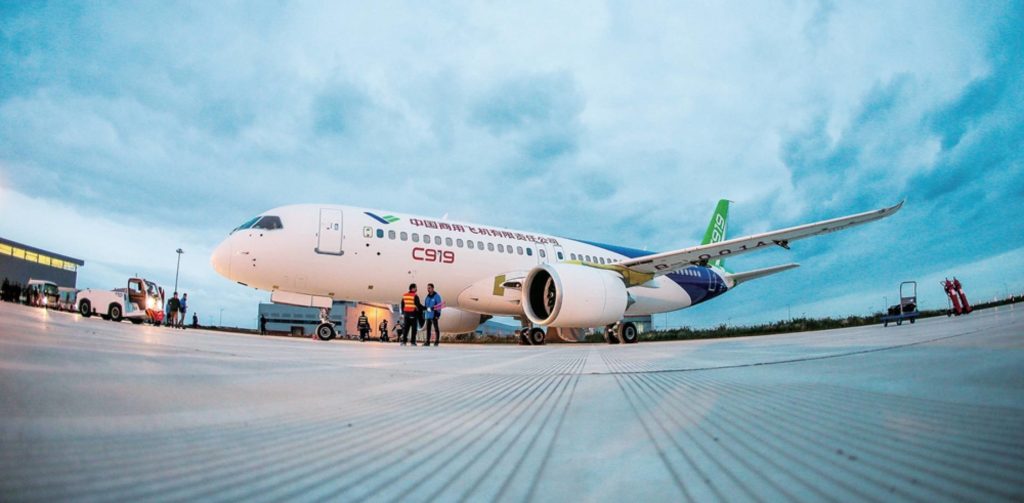




11 Sep 2025
The Rise of Narrowbody Dominance: What It Means for Leasing Strategy
The sound of a single-aisle jet taxiing onto a runway is becoming the defining soundtrack of global aviation. In markets once dominated by widebodies and long-haul prestige, narrowbody aircraft are now taking center stage reshaping fleet decisions, lease strategies, and the expectations of investors.
For lessors, this trend isn’t just about a shift in aircraft preference. It’s a structural change in how value is created, risk is managed, and growth is pursued in an industry that is still recalibrating after the turbulence of recent years.
Why Narrowbodies Are Winning
The rise of narrowbody dominance isn’t accidental it’s the result of multiple intersecting forces:
- Changing passenger demand: Short-to-medium haul routes remain the backbone of global air traffic. As leisure travel expands and business travel continues its selective recovery, narrowbodies offer the flexibility to serve both regional and point-to-point routes efficiently.
- Fuel efficiency and range improvements: Aircraft like the Airbus A321neo and Boeing 737 MAX have extended the operational reach of narrowbodies, enabling them to cover missions once reserved for smaller widebodies.
- Fleet renewal priorities: Airlines under financial pressure are doubling down on aircraft that maximize utilization and reduce per-seat costs. Narrowbodies deliver both.
- Resilient secondary market: Compared to widebodies, narrowbodies have stronger demand in secondary leasing markets, creating more liquidity and reducing exposure for lessors.
The result? Narrowbodies are no longer simply “regional workhorses.” They’ve become central to global fleet planning.
Impact on Leasing Strategy
For aircraft lessors, the dominance of narrowbodies reshapes several core considerations:
- Portfolio Composition
Lessors are increasingly tilting their portfolios toward single-aisle aircraft, balancing exposure away from widebodies. A diverse mix of A320neo and 737 MAX family aircraft has become a standard strategy to spread operational and regional risk.
- Lease Terms and Tenors
Narrow Bodies, with their strong secondary market appeal, allow lessors to structure leases with confidence that residual values will hold. This creates opportunities for more flexible lease lengths while still preserving asset value.
- Residual Value Management
Widebody residual values have proven volatile in recent years. In contrast, narrowbodies demonstrate resilience, partly due to their adaptability across airline types and markets. For investors, this stability is a key differentiator.
- Risk Diversification
Concentrating on narrowbodies provides lessors with a hedge against geopolitical or regional traffic shocks. Since these aircraft can be redeployed more easily, the risk of long idle periods is reduced.
The Secondary Market Advantage
One of the most powerful drivers of narrowbody dominance is their secondary market strength. When an airline defaults, restructures, or pivots strategy, narrowbodies can be placed elsewhere more easily than widebodies.
For example:
- An A320 or 737 can quickly find demand in low-cost carriers (LCCs), which continue to grow globally.
- Engine commonality across fleets increases interchangeability, reducing reconfiguration costs.
- Strong demand in emerging markets ensures continued absorption of narrowbody capacity.
For lessors, this makes narrow bodies not only easier to finance but also more attractive to investors seeking predictable returns.
What This Means for Widebodies
Widebodies aren’t disappearing, but their role is becoming more specialized. Long-haul travel is recovering, but unevenly. Aircraft like the A350 and 787 will remain central to intercontinental routes, but they will make up a smaller share of overall fleets.
For lessors, this shift means widebodies may require longer placement periods, more bespoke lease terms, and deeper collaboration with airlines to manage risk. Widebodies have moved from “core fleet” status to “strategic niche.”
Investor Confidence and Capital Flow
Investors watching aviation leasing are increasingly drawn to narrowbody-heavy portfolios. The logic is simple:
- Predictable demand = stronger returns.
- Lower placement risk = reduced volatility.
- Higher liquidity = greater exit options.
As a result, narrowbody-backed leasing platforms are attracting capital at more competitive rates, reinforcing the cycle of investment into single-aisle fleets.
Acumen’s Perspective: Resilience in Strategy
At Acumen, we see narrowbody dominance not as a short-term trend but as a durable market realignment. For lessors, success will hinge on two things:
- Data-driven decision making: Leveraging accurate, forward-looking market intelligence to time acquisitions and manage transitions effectively.
- Lifecycle value optimization: Ensuring assets are managed not just for lease placement but for long-term performance, from maintenance scheduling to remarketing.
Our advisory and technical services are designed to help lessors capitalize on this shift building resilient portfolios that balance opportunity with risk mitigation. Whether it’s evaluating fleet strategies, supporting transitions, or stress-testing residual value assumptions, Acumen helps lessors stay ahead of the curve.
Looking Ahead
The narrowbody era signals a redefinition of what “mainstream” aviation looks like. Where widebodies once symbolized growth and prestige, narrowbodies now represent efficiency, adaptability, and resilience.
For lessors, the challenge is not simply to follow the trend but to anticipate its next phase:
- How will sustainability targets reshape narrowbody utilization?
- Will new entrants and startups drive even more demand in emerging regions?
- How will competition between Airbus and Boeing play out across delivery pipelines?
The answers to these questions will determine not just the balance of fleets but the balance of returns in leasing portfolios.
Final Thought
The rise of narrowbody dominance is more than a fleet trend; it's a strategic reset for lessors and investors. Those who recognize the resilience of narrowbodies, align their portfolios accordingly, and manage lifecycle performance with discipline will be the ones best positioned for the next decade of aviation leasing.





